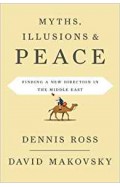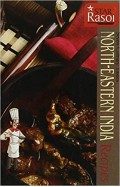Power Couple - Russian-Iranian Alignment in the Middle East
By: Ghoncheh Tazmini
-
Rs 5,246.25
- Rs 6,995.00
- 25%
You save Rs 1,748.75.
Due to constant currency fluctuation, prices are subject to change with or without notice.
This book assesses how Moscow and Tehran have built their strategic partnership. Ghoncheh Tazmini argues for a Russia-Iran ‘alignment’, which is based on their shared narratives of the international order. She shows that to counteract US unilateralism, and with both states feeling internationally isolated, the Kremlin needs Tehran as much as Tehran needs the Kremlin. Yet it is well known that these states’ conflicting agendas and asymmetries create areas of tension especially concerning divergent interests in Syria, Iraq, Yemen, and the GCC.
Based on primary Persian sources and interviews with stakeholders, Tazmini explains why Moscow-Tehran relations are a lot more durable than many in the West and the Middle East may believe. Given the US’s decision to narrow its scope of engagement in the Middle East, and new security concerns posed by Russia as key actor in the region, this analysis will be vital for assessing the implications of the Moscow-Tehran alignment.
This book assesses how Moscow and Tehran have built their strategic partnership. Ghoncheh Tazmini argues for a Russia-Iran ‘alignment’, which is based on their shared narratives of the international order. She shows that to counteract US unilateralism, and with both states feeling internationally isolated, the Kremlin needs Tehran as much as Tehran needs the Kremlin. Yet it is well known that these states’ conflicting agendas and asymmetries create areas of tension especially concerning divergent interests in Syria, Iraq, Yemen, and the GCC.
Based on primary Persian sources and interviews with stakeholders, Tazmini explains why Moscow-Tehran relations are a lot more durable than many in the West and the Middle East may believe. Given the US’s decision to narrow its scope of engagement in the Middle East, and new security concerns posed by Russia as key actor in the region, this analysis will be vital for assessing the implications of the Moscow-Tehran alignment.
Power Couple - Russian-Iranian Alignment in the Middle East
By: Ghoncheh Tazmini
Rs 5,246.25 Rs 6,995.00 Ex Tax :Rs 5,246.25
Zubin Mehta: A Musical Journey (An Authorized Biography)
By: VOID - Bakhtiar K. Dadabhoy
Rs 472.50 Rs 1,050.00 Ex Tax :Rs 472.50
Myths Illusions and Peace: Finding a New Direction for America in the Middle East
By: Dennis Ross
Rs 876.00 Rs 1,095.00 Ex Tax :Rs 876.00
The Origins of Political Order From Prehuman Times to the French RevolutioN
By: Francis Fukuyama
Rs 3,116.00 Rs 3,895.00 Ex Tax :Rs 3,116.00
Manning Up: How the Rise of Women Has Turned Men into Boys
By: Kay Hymowitz
Rs 646.75 Rs 995.00 Ex Tax :Rs 646.75
The Obama Syndrome: Surrender At Home War Abroad
By: Tariq Ali
Rs 1,036.00 Rs 1,295.00 Ex Tax :Rs 1,036.00
The Quest For Meaning: Developing A Philosophy Of Pluralism
By: Tariq Ramadan
Rs 1,116.00 Rs 1,395.00 Ex Tax :Rs 1,116.00
No similar books from this author available at the moment.
No recently viewed books available at the moment.
Zubin Mehta: A Musical Journey (An Authorized Biography)
By: VOID - Bakhtiar K. Dadabhoy
Rs 472.50 Rs 1,050.00 Ex Tax :Rs 472.50
Power Couple - Russian-Iranian Alignment in the Middle East
By: Ghoncheh Tazmini
Rs 5,246.25 Rs 6,995.00 Ex Tax :Rs 5,246.25













-120x187.jpg?q6)







-120x187.jpg?q6)





